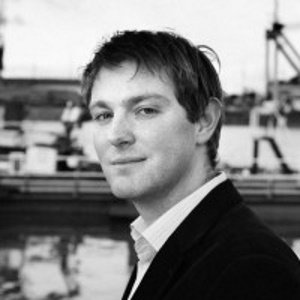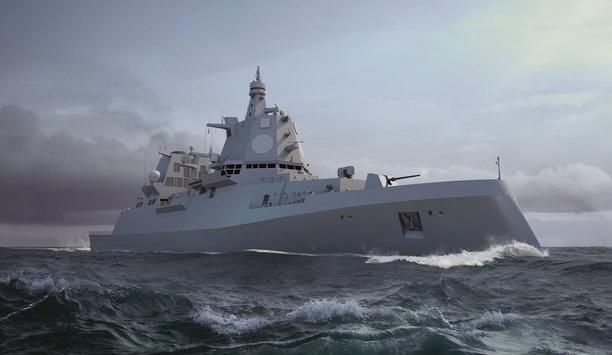Ulstein Design & Solutions - Experts & Thought Leaders
Latest Ulstein Design & Solutions news & announcements
thyssenkrupp Marine Systems has a long and proven legacy of designing and delivering world-class frigates. Since 1980, 78 vessels have been delivered across 11 different classes, demonstrating deep expertise, innovation, and reliability in naval shipbuilding. Ulstein Group also brings a strong legacy in designing the most advanced marine platforms for demanding operations. With decades of experience in offshore and specialised vessels, Ulstein is known for innovation, safety, and performance in extreme environments. Alternative for the Norwegian Navy Ulstein and thyssenkrupp Marine Systems are corps that place a strong focus on delivery precision Both Ulstein and thyssenkrupp Marine Systems are organisations that place a strong focus on delivery precision and project execution. Reliable, on-time delivery is a hallmark of both companies, making this partnership a dependable and capable alternative for the Norwegian Navy. By combining the shared expertise in naval and commercial shipbuilding, this partnership represents a strong and future-ready alternative for the Norwegian Navy. Collaboration between Ulstein and thyssenkrupp Marine Systems (tkMS) A strategic boost for the Norwegian maritime industry - tkMS is one of four remaining contenders in a major maritime project. This is the only European alternative that includes building in Norway. Background Ulstein signed a Letter of Intent (LOI) with tkMS on March 26, 2025, based on shared values and strategies. Both companies have experience building vessels in the customer’s home country. One example is the frigate program in Brazil, where tkMS is realising these vessels at its own shipyard. tkMS places strong emphasis on technology transfers, ensuring long-term competence building and industrial development in the partner country. Building strategy Hull production in Germany and outfitting in Norway – a well-known and proven model for how Ulstein is realising commercial vessels. tkMS has decades of experience with this model and with frigate design. Opportunities for Norwegian industry The new design offers significant opportunities for Norwegian equipment suppliers to integrate their products and systems. The majority of the project’s scope is planned to be carried out in Norway. The outfitting phase alone is expected to engage 400–430 people continuously. In addition, there will be personnel from companies delivering systems such as ventilation, interior, painting, etc. Employment and ripple effects The multiplier effect is significant: 1 man-year at a shipyard → 3.0–3.5 man-years in the supply chain. An additional 2.0–2.5 man-years from investment effects, consumption, and tax revenues. These figures apply to the construction phase – the operational phase of the vessels will generate further effects. Conclusion Major opportunity for value creation in the region and across the Norwegian maritime industry This is the only European alternative that includes building in Norway – bringing with it substantial employment and ripple effects. It represents a major opportunity for value creation in the region and across the Norwegian maritime industry. Huge opportunities for Norwegian suppliers. This new design is now under development, offering significant potential for Norway’s world-class maritime suppliers. The scope is not limited to the 5–6 Norwegian frigates–this frigate design will also be built for the German Navy, with totally 10-12 planned, and a potential for substantial more. Supplier meeting points–Week 21 Please be informed that there will be supplier gatherings in Kristiansand (20 May), Ålesund (21 May), and Bergen (22 May). These events are an opportunity to meet the thyssenkrupp Marine Systems team and present the products and systems relevant to the frigate programme.
The Olympic Zeus marked a significant advancement in maritime technology and a disruptive step into reduced environmental footprints upon its delivery in 2009. It gained tremendous attention in the Anchor-Handling Tug Supply (AHTS) market by adopting a hybrid Diesel-Electric/Diesel-Mechanical (DE/DM) power system, unlike its predecessors that relied on solely Diesel-Mechanical (DM) propulsion. Reduction in fuel consumption Innovation resulted in an impressive reduction in fuel consumption by up to 70% in specific modes This innovation resulted in an impressive reduction in fuel consumption by up to 70% in specific modes, and astonishing clients. “The Olympic Zeus was the best! Today, 15 years later, she is still among the best,” comments the shipowner, Olympic Shipping. In 2024, this groundbreaking vessel celebrated its 15th anniversary. Reducing the environmental footprint The vessel is based on the ULSTEIN A122 design by Ulstein Design & Solutions AS and constructed at Ulstein Verft. It is state-of-the-art in multiple ways, including the hybrid machinery, deep-water capabilities, excellent seakeeping, and performance characteristics that ensure outstanding fuel economy and low emissions. Already 15 years ago, Olympic Shipping and Ulstein had a strong focus on reducing the environmental footprint of the vessels. "It is still an excellent vessel with a very relevant setup, and there are not many other vessels around even today that can compete with it," Runar Stave, Chief Technical Officer of Olympic Shipping.
The hull of yard number (Yno) 321 for BS Offshore arrived at Ulstein Verft. This marks the beginning of a new phase in the shipbuilding process. The vessel is designed by Ulstein Design & Solutions AS for ‘walk-to-work’ (W2W) operations, where personnel walks via a motion-compensated gangway from the ship to a wind turbine. Hull arrival at Ulstein Verft The hull arrival at Ulstein Verft marks a new phase, which includes securing, painting While the hull has been under construction at the CRIST yard in Poland, closely monitored by a site team from Ulstein Verft, the designers and engineers at the various Ulstein companies in Norway and Poland have been working on finalising the detailed drawings for the ship. The hull arrival at Ulstein Verft marks a new phase, which includes securing, painting, outfitting, piping, equipment installations, electrical work, and system integration. Progress and collaboration of the vessel The vessel is sister to Yno 320, launched at Ulstein Verft on 23 February. “We are pleased to see the journey toward completing the second CSOV is progressing and look forward to the continued progress and collaboration in bringing this vessel, designed with efficiency, safety, and sustainability at its core, to life”, says Matthias Müller, Managing Director BS Offshore. TWIN X-STERN CSOV series The vessel will also have a diesel-electric propulsion system with substantial battery energy storage Like its predecessor, the newbuild is part of the innovative TWIN X-STERN CSOV series, known for its exceptional operational performance and seakeeping abilities. During the outfitting phase, the vessel will be equipped with advanced technology, including a 3D-compensated crane and a gangway, ensuring safe and efficient personnel and cargo transfer to offshore wind turbine facilities. The vessel will also have a diesel-electric propulsion system with substantial battery energy storage, significantly reducing the environmental footprint. She is prepared for methanol as a future fuel. Offshore wind sector After her delivery in 2025, the vessel will be ready to support the offshore wind sector with modern, high-comfort accommodation for up to 132 crew and clients. This is Ulstein's fifth W2W vessel for BS Offshore. All have been designed by Ulstein Design & Solutions AS and constructed at Ulstein Verft. BS Offshore is a pioneering ship owner, and Ulstein is proud to continue the partnership, contributing to the advancement of sustainable maritime solutions.













